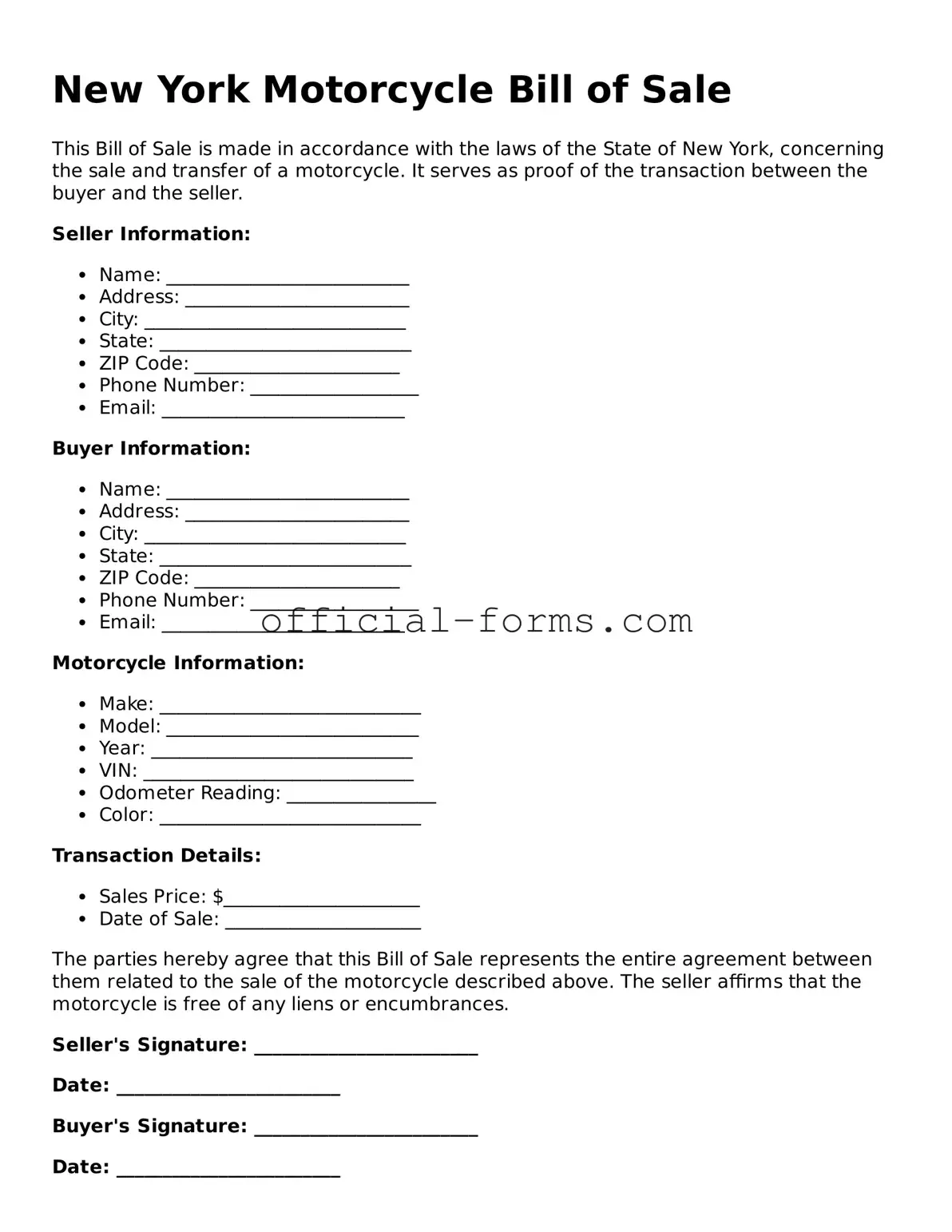Official New York Motorcycle Bill of Sale Document
The New York Motorcycle Bill of Sale form is a legal document that records the transfer of ownership of a motorcycle from one party to another. This form serves as proof of the transaction and includes essential details about the motorcycle and the parties involved. Understanding this document is crucial for both buyers and sellers to ensure a smooth transfer process.
Open My Motorcycle Bill of Sale Now
